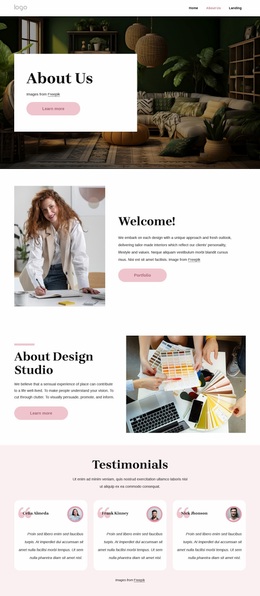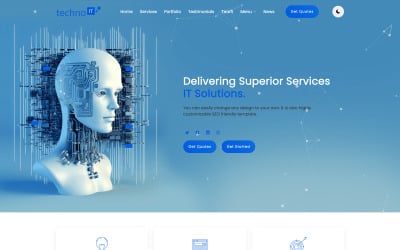Key Factors to Consider When Planning Your Website Design
Key Factors to Consider When Planning Your Website Design
Blog Article
The Ultimate Guide to Modern Web Site Design Trends
In the ever-evolving digital landscape, modern-day internet site layout fads play a crucial role in shaping customer experience and involvement. From the surge of minimal design principles that focus on simplicity to the impact of vibrant typography in specifying brand name identity, each component contributes to a cohesive online presence.
Minimalist Layout Principles
Minimal style principles emphasize the concept that less is a lot more, supporting for simplicity and functionality in visual interaction. This method strips away unneeded aspects, focusing instead on vital elements that communicate the desired message properly. By focusing on clearness, minimal layout enhances customer experience, allowing site visitors to browse web sites effortlessly.
Core tenets of minimalist style consist of using ample white area, which develops a feeling of equilibrium and company. This unfavorable space not just routes the customer's attention to key aspects yet also promotes a calming visual atmosphere. In addition, a limited color combination is often utilized, using monochromatic plans or soft tones to maintain visual communication and protect against frustrating the individual.
Typography plays a critical duty in minimalist design, where legible typefaces are chosen for their simplicity and performance in connecting web content. Images and graphics are conserved, making sure that they offer an objective instead of sidetrack from the total message. Inevitably, minimal design principles grow a concentrated setting that encourages customers to involve with the content, enhancing the general performance of modern-day web site style. This pattern shows an expanding appreciation for thoughtful, user-centric aesthetic appeals in digital spaces.
Vibrant Typography Selections
Accepting bold typography selections has actually ended up being a specifying feature of modern site design, as it successfully records interest and conveys solid messaging. Designers are increasingly making use of typography not simply as a functional element however as a key aesthetic component that boosts the overall visual and user experience.

Furthermore, the association of bold typography with minimalist design principles enables striking contrasts, improving readability while maintaining aesthetic charm. The use of whitespace around vibrant message even more highlights its value, making certain that the message resonates with the target market.
As electronic landscapes end up being extra affordable, leveraging bold typography enables brand names to separate themselves and leave a long lasting impression. The careful selection of font styles and their application can stimulate emotions, develop tone, and drive activity, making strong typography a crucial tool in contemporary site style. Inevitably, it is a powerful means to improve narration and guarantee that crucial messages are not just seen but likewise really felt.
Receptive and Mobile-first Design
Responsive and mobile-first layout has actually become an essential concept in contemporary internet site development, reflecting the increasing reliance on smart phones for accessing online content. As user actions shifts towards mobile browsing, developers need to focus on developing experiences that adapt effortlessly throughout numerous screen dimensions and resolutions.
A responsive style guarantees that a site automatically adjusts its format, pictures, and performance based on the gadget being utilized. This strategy improves individual experience by supplying constant navigation and readability, regardless of whether the site visitor gets on a tablet, smart device, or desktop computer computer system. Mobile-first style advocates for establishing sites originally for smaller sized screens, consequently scaling up to bigger displays. This approach motivates a more efficient and streamlined style procedure, focusing on crucial material and capability initially.
Executing mobile-first and receptive concepts not only provides to user choices but also aligns with seo (SEARCH ENGINE OPTIMIZATION) methods. Major internet search engine, like Google, prioritize mobile-friendly websites in their rankings, making it necessary for businesses to embrace these design strategies. In a competitive digital landscape, welcoming receptive and mobile-first see here design is not simply a choice; it is important for making certain availability and interaction with a varied audience.
Engaging Microinteractions
Microinteractions play a pivotal duty in enhancing customer engagement and general web site experience, particularly in the context of mobile-first and receptive design. These refined style elements provide immediate responses to customers, making interactions more pleasurable and user-friendly. Instances include button animations, notice signals, and packing indicators, which not just guide users however additionally create a feeling of connection with the user interface.
Incorporating appealing microinteractions can substantially boost usability by decreasing cognitive lots. When users receive aesthetic or auditory comments upon executing actions, such as clicking a button or submitting a kind, they really feel extra positive in their selections. This cultivates a smoother navigation experience, ultimately boosting user retention.

As site layout patterns remain to advance, the significance of microinteractions can not be overstated. They serve as the refined yet effective touchpoints that change average communications into phenomenal experiences, therefore raising the general performance of modern-day web design.
Sustainable Web Layout Practices
Lasting web layout methods are becoming progressively vital as the digital landscape expands and ecological concerns climb. Designers and developers are identifying their obligation to produce sites that not just serve individual This Site requirements but additionally lessen ecological impact. This strategy incorporates numerous crucial techniques.
To start with, optimizing power usage is critical. Websites should be created to load swiftly and effectively, which reduces server energy usage and boosts user experience. Strategies such as photo compression, reducing HTTP demands, and using modern coding practices contribute dramatically to this goal.
Secondly, selecting eco-friendly holding providers is vital - website design. Many organizing firms are now powered by renewable resource sources, allowing internet sites to operate in a much more sustainable manner. This choice mirrors a commitment to decreasing carbon impacts
Additionally, taking on a minimalist design can improve sustainability. Less components on a web page result in much less information transfer, which not only quickens packing times yet likewise conserves resources.
Last but not least, advertising digital access ensures that sites reach a wider audience without unnecessary bloat, aligning user experience with ecological duty. By incorporating these lasting techniques, web designers can contribute positively to both customer involvement and the earth's health.
Verdict
In summary, contemporary website design trends highlight the combination of minimal principles, vibrant typography, and receptive style to enhance customer experience. Engaging microinteractions add to unforgettable interactions, while sustainable techniques promote for eco conscious advancement. Jointly, these elements not only raise visual appeal but likewise boost functionality, making sure that websites are both easy to use and aesthetically striking. Taking on these fads is essential for developing impactful digital experiences that reverberate with users in an increasingly affordable on the internet landscape.
In the ever-evolving digital landscape, contemporary website style patterns play an essential duty in forming user experience and interaction. By prioritizing quality, minimal from this source layout boosts customer experience, enabling visitors to navigate websites easily.
Inevitably, minimal style principles grow a concentrated atmosphere that encourages customers to involve with the content, enhancing the total performance of contemporary site design.Microinteractions play a crucial function in improving user involvement and general site experience, specifically in the context of mobile-first and responsive layout.In recap, contemporary web site design fads highlight the integration of minimal principles, vibrant typography, and responsive layout to enhance customer experience.
Report this page